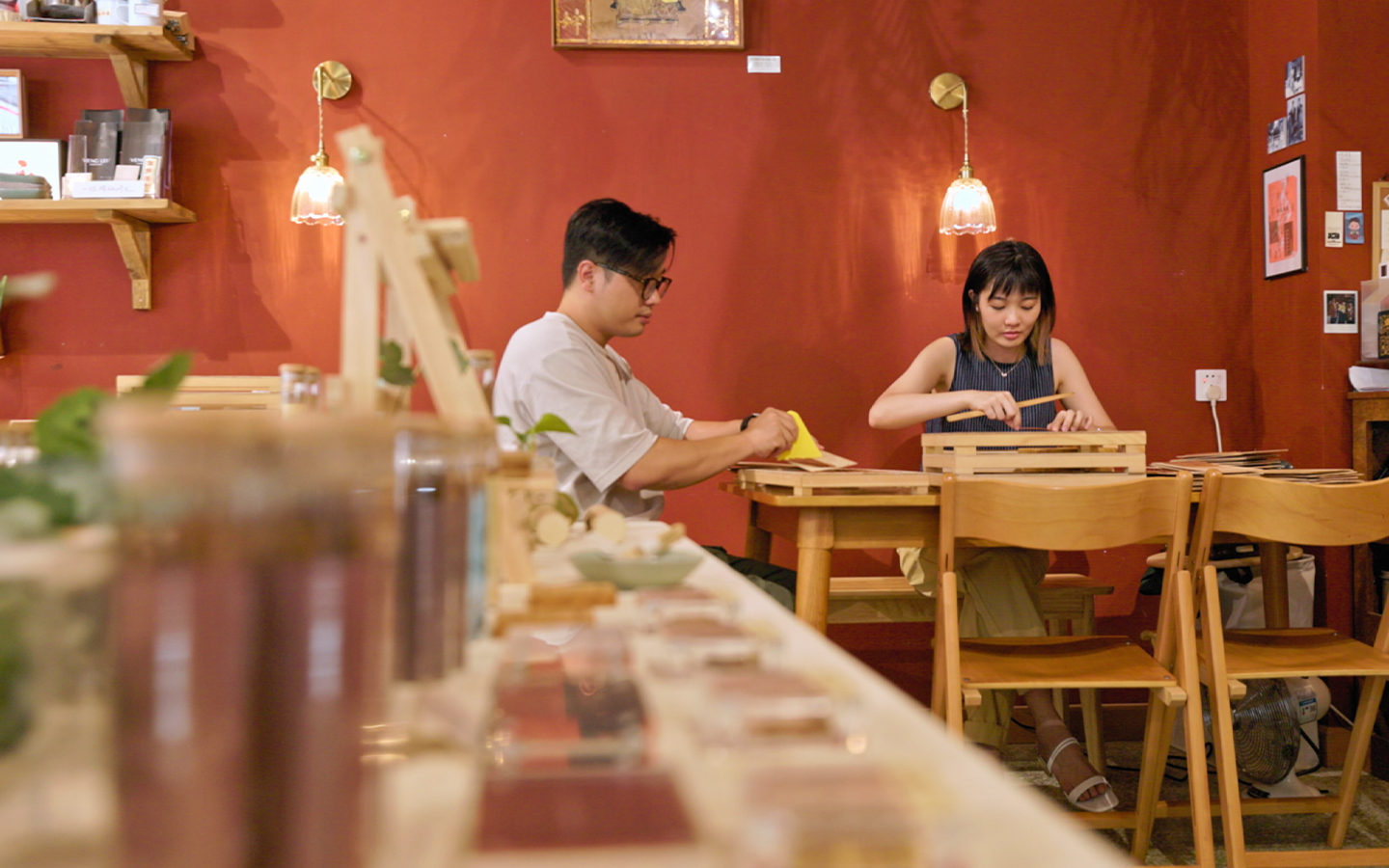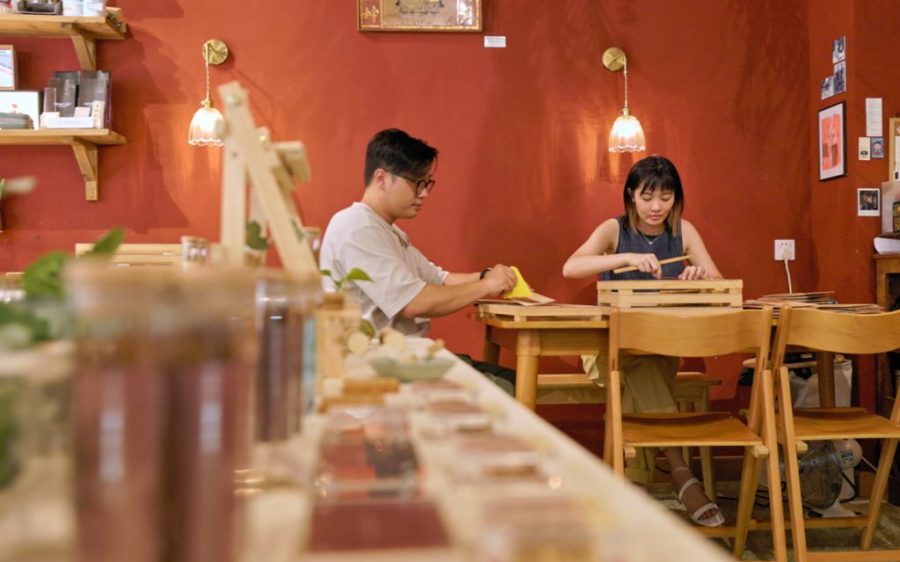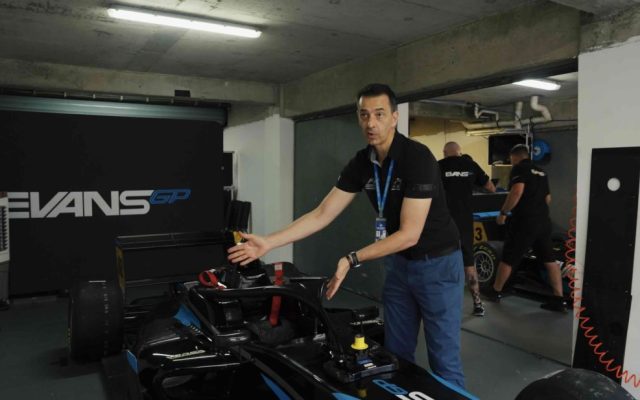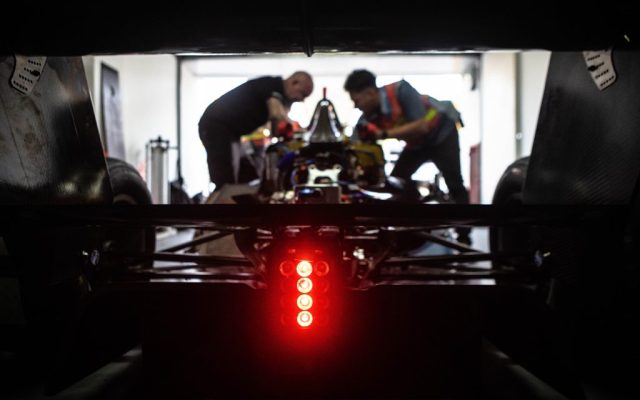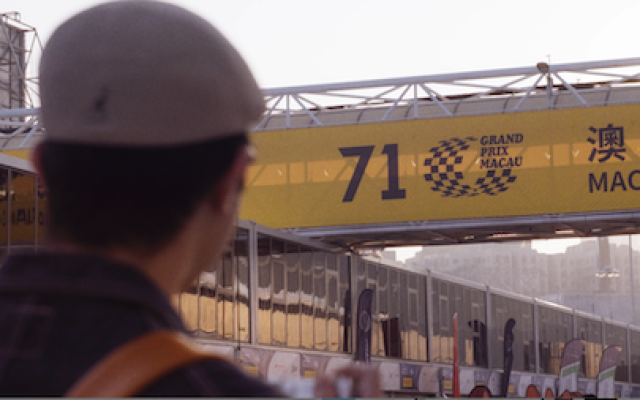You can’t wander far in Macao without encountering the warm, woody scent of burning incense swirling out of a nearby temple. Since the 1900s, incense stick manufacturing has been an integral part of Macao’s cultural fabric – so much so that the government added the artisanal practice to its growing inventory of Intangible Cultural Heritage items of Macao, along with dozens of other handicrafts, practices, arts, social rituals and festive events.
In the industry’s heyday, about 20 shops operated in Macao including Veng Lei Paper. Founded in 1942 by the late Chan Lai, the humble shop produced traditional incense, joss paper and paper crafts, which Macao residents burned as offerings to Chinese deities and ancestors. Chan, who died in 1988, trained his children in the art but sadly had to close his shop in 1985, due to decreasing sales and land reclamation projects.
Nearly 40 years after the shop shut down, Chan’s grandson Keng Si Wong has revived the historic incense brand. Working side by side with his girlfriend and business partner, Kim Chen, Keng Si opened Veng Lei Laboratory in May 2021 with a mission to modernise the industry.
Alongside more traditional products, the new Veng Lei also offers customisable incense sticks, cones, coils, and incense cookies (a flat, circular incense disc) that can be used for everyday aromatherapy and relaxation – not just for temple visits. In this way, Keng Si isn’t carrying on the family trade so much as transforming it.
“At the onset of the pandemic, many in Macao used incense sticks only for spiritual offerings. That has changed, as many individuals have begun to use it as a way to ease their nerves during these tense times,” says Chen. “Most of our customers work from home and we got a lot of feedback saying that the incense sticks helped them concentrate or relax after a long day of work.”
Making scents of the past
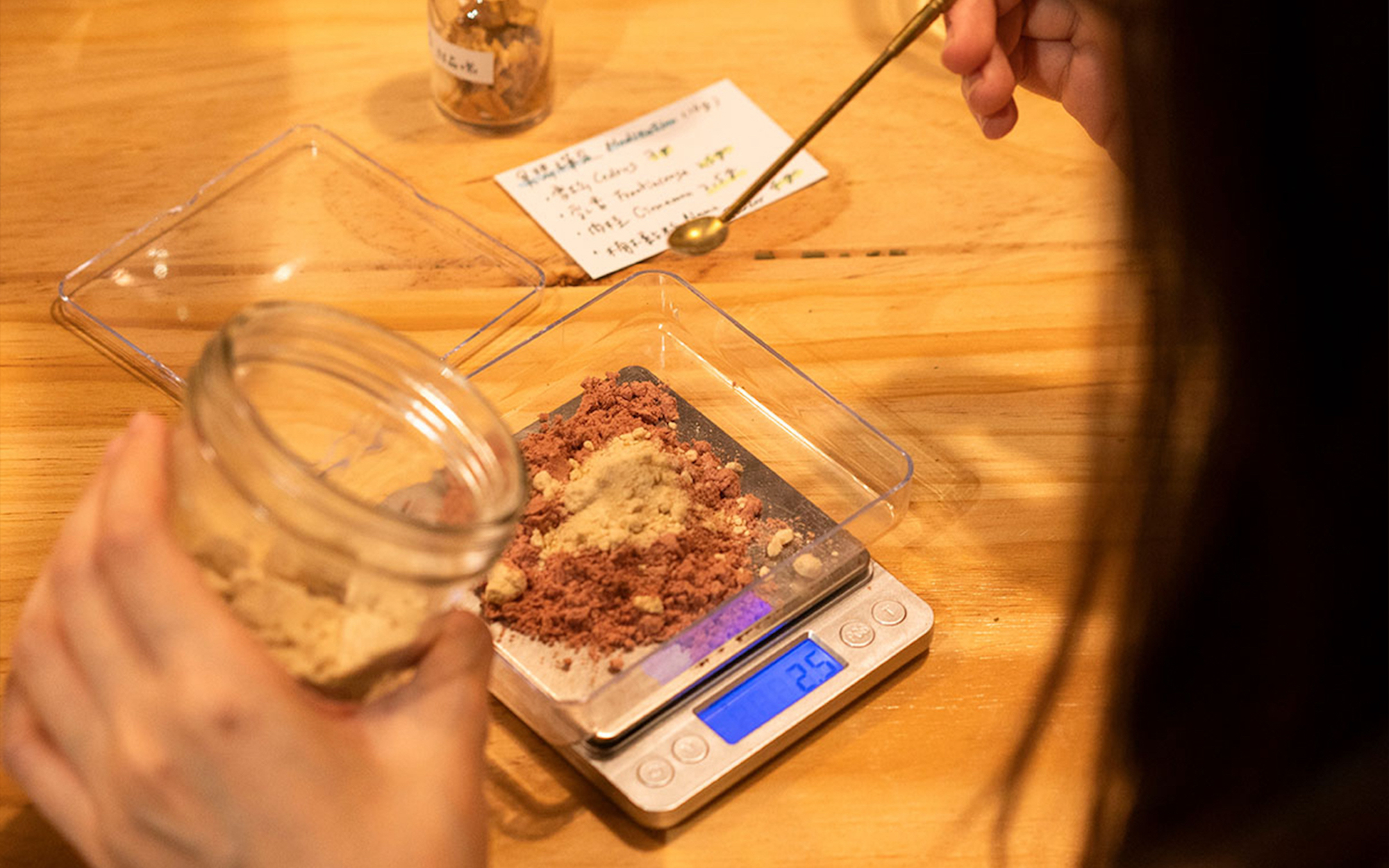
Well before the original Veng Lei debuted, Macao’s incense market found its footing. In the early 1900s, an abundance of inexpensive open land enabled manufacturers to dry their incense in vacant plots, mainly around the Inner Harbour. In addition, Macao’s close relationship with mainland China made it relatively easy to export incense products.
Beginning in the 1930s, Macao’s incense industry quickly expanded with annual revenues totalling up to MOP 2.5 million. When Chan opened the original Veng Lei Paper on Rua da Praia do Manduco, near Macao’s inner harbour, it was an instant success. According to Keng Si’s grandmother, Zaak Wai Yin, fishermen preparing for sea would burn joss paper as an offering to the gods as they prayed for safe passage. “At that time, the shop had so many people coming in to buy joss paper – the business was really booming,” says Keng Si.
About two decades later, the industry peaked between the 1960s and ‘70s. At the time, over 20 factories made incense for export to mainland China, which had stopped producing incense during the Cultural Revolution (1966-1976). But in the early 1980s, the industry began to shift to mainland China. Following economic reforms under Deng Xiaoping, land, wages and transportation costs dwarfed those of Macao, making it much more cost-effective to do business in cities like Guangzhou or Foshan.
Instead of working in incense factories, Macao’s younger generations found jobs in other industries, such as toy-making and shipbuilding, and many long-standing incense shops closed, including Veng Lei.
“My grandfather had just turned 80 and no one in the family wanted to take over the shop, since the market was declining,” says Keng Si, who was born in Macao in 1993. “My uncles and aunts all went to work at other places after the shop closed down.”
Keng Si says that he never got to know his grandfather, who passed away before he was born, but his grandmother shared many stories with him. Keng Si’s grandfather learned the art of making joss paper and incense at an early age and, after opening Veng Lei Paper, moved his wife and seven children into the residence above the shop. Everyone pitched in and helped run the business.
By reopening the family shop, Keng Si says he hopes to honour his grandfather’s memory, preserve some of Macao’s traditions and modernise incense to attract younger consumers.
“We research people’s interests in scents, as different generations and ages will have different tastes of what smells and what makes them happy,” Chen says. “So we put great effort into this to attract [younger] people to our incense, adding in smells like floral and fruit apart from the common sandalwood.”
A new generation of incense artisans
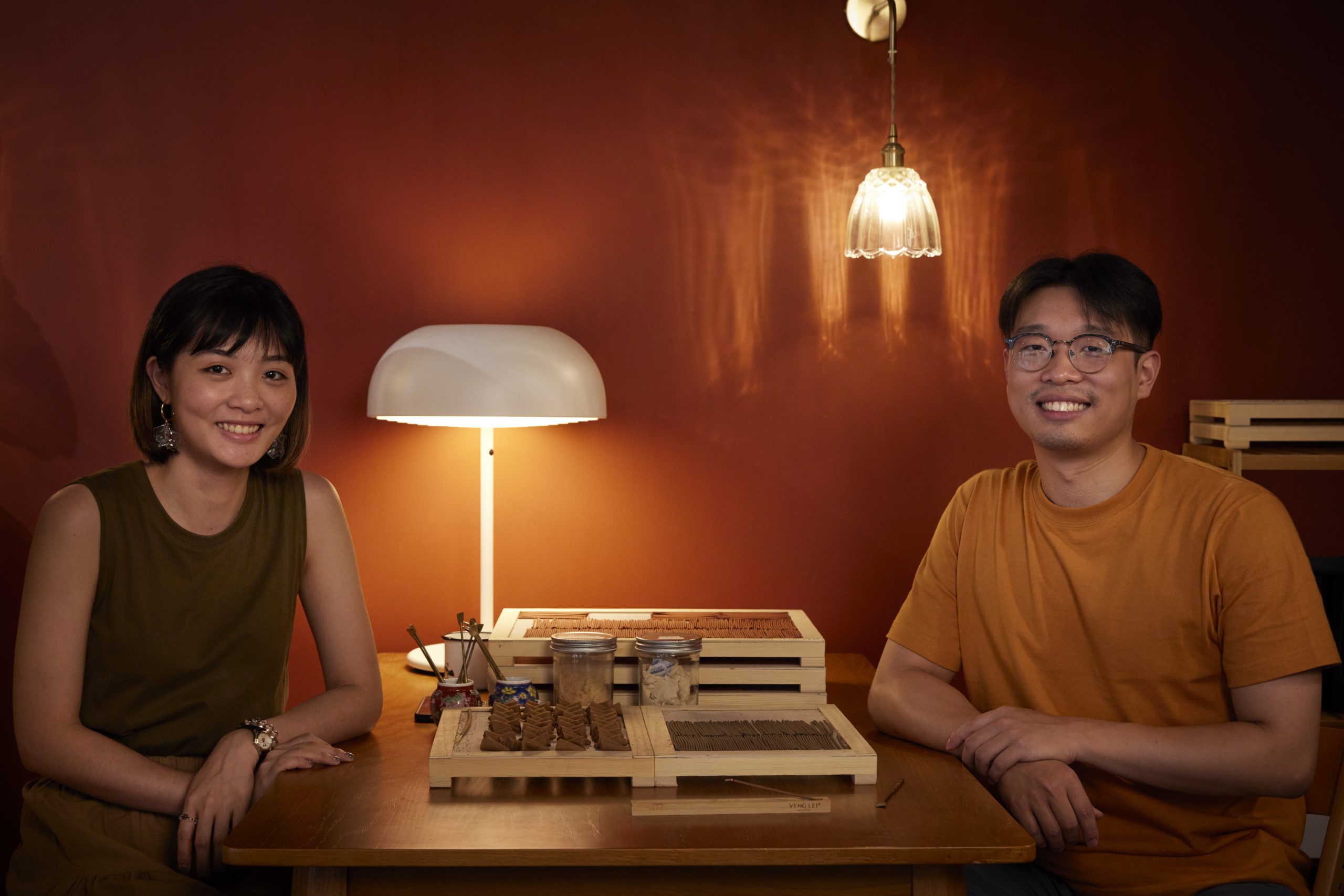
Keng Si and Chen started dating while studying art at Kun Shan University in southwestern Taiwan. After the couple graduated in 2017, Chen continued her academic career at the Beijing Film Academy, while Keng Si moved to Taipei University of the Arts. A year later, they both worked in Beijing as freelancers: Chen in the advertising industry and Keng Si, the movie industry.
When the pandemic escalated in 2020, Keng Si returned to Macao after finishing a film in mainland China. Due to the turbulent situation, he decided to stay in his hometown. Chen joined her partner not long after, since the advertising industry had slowed to a halt. The sudden break from their careers prompted them to take on a new adventure. “We knew that it would be a long time before [our industries] picked back up,” Chen says.
While tidying up the house one day, Chen came across a piece of Veng Lei joss paper and thought, ‘Why not re-open this antique business?’ Keng Si, remembering stories of his grandfather’s shop, was on board. After all, Keng Si grew up immersed in the incense-making business, and his mother and grandmother had taught him how to make joss sticks during his childhood.
In need of a refresher, Keng Si and Chen learned how to make incense from Keng Si’s family and books, such as 香典 (available in Chinese only), throughout 2020. Keng Si’s grandmother also taught him all about operations, opening a trove of valuable resources that she had stored for nearly 70 years. She still had everything from electricity bills to delivery notes and business registration paperwork, as well as joss paper and incense sticks from the old shop.
At the same time, Keng Si and Chen needed to learn the art of hexiang (合香 in Chinese), or fragrant incense, which enables artisans to craft aroma blends that serve a particular purpose, like creating allergy- or pet-friendly scents. To make hexiang, they first mix their desired herbs and spices together with a sticky wood powder and water. They stir the mix until it turns into a mass of mud, then add the desired herbs and spices until the mix forms a gel. Next, they knead the mound, and then let it dry. Once dry, the mix is ready to be shaped into incense sticks, strips, cones, or other shapes.
“The basic skills required to make both sacrificial incense [joss sticks] and hexiang are the same,” Keng Si explains. “But there’s a difference when learning hexiang because you get a deeper understanding of herbs and flowers.”
Since there are so many different herbs to study, it took the couple a year to learn the craft. So far, they have only explored ingredients used across Greater China but hope to expand their knowledge across Europe and Southeast Asia in the future.
Experimenting with aromas
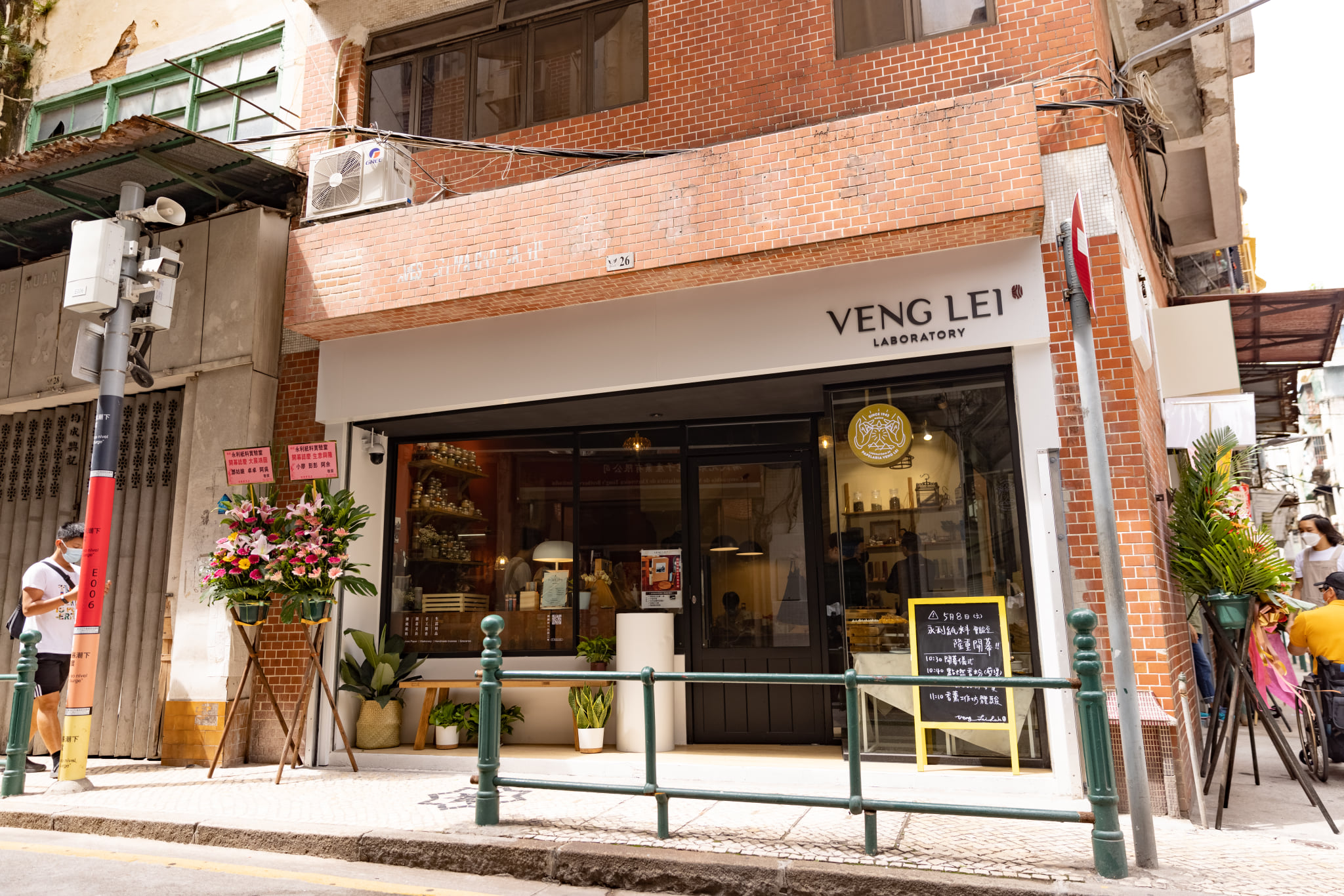
In May 2021, Veng Lei Laboratory opened in the Edificio Va Un on Rua das Estalagens, near the famous Rua dos Ervanários. Chen says they chose this address because it has an auspicious orientation and is part of a charming historical neighbourhood.
“This street is really old and still sells handmade things like shoes, tools and fabric. Since we are reviving an old brand and want to bring back that same spirit of tradition, we thought it was a perfect spot,” says Chen. “We liked that it had an L-shaped area where people can see and enter the shop from two sides. That was a big part of the decision.”
The couple made the space their own by upcycling decor from the bird shop that preceded them. “There were hundreds of birdcages and a few bird cups [a tiny glass cup used to offer water to birds] left behind,” says Chen. “We loved them and wanted to preserve the items, so we cleaned them all up and used them as lamps in our store.”
This same thought and care extend to other aspects of the business. Embodying a modern and minimalist aesthetic, Veng Lei creates sleek wooden incense holders while presenting its 20 incense scents in glass bottles, so it’s easier for customers to sample each aroma. The brand also collaborates with other local companies to spread its love for scents.
For instance, they recently held an incense yoga and handpan event at Lisboeta Macau’s H853 outdoor event space, hosted an orchid arrangement workshop with Uniplant853 plant shop, and collaborated with Gems Awakening on a series of incense and gemstone packs.
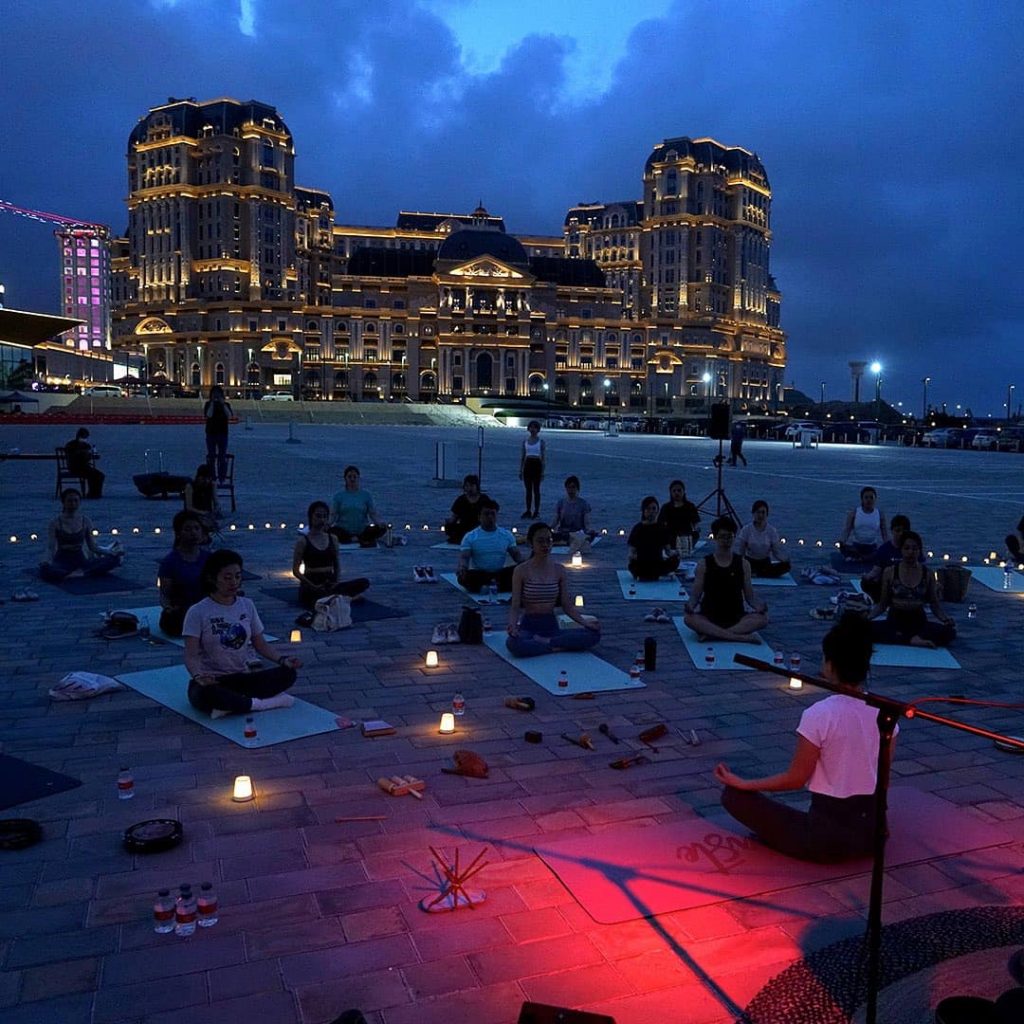
Every day at work, the two brainstorm new ideas to make Veng Lei’s products as helpful and versatile as possible. For example, they design incense aromas that target specific needs – such as sleep, stress or mindfulness.
Keng Si and Chen work long hours making the incense themselves. It’s hard work, but it allows them the freedom to customise each incense aroma for their customers. “If customers prefer a floral smell, for example, then we can add in rose. It’s something special that makes it more memorable,” explains Chen.
Veng Lei’s signature collection of four scents include a mix of the familiar and unexpected: traditional (agarwood and sandalwood), floral and fruity, sage tea, and “algorithm”. The latter has a traditional base that can be customised with fresh additions, such as grass or fruit.
The pair finds inspiration for scents everywhere, from movies to novels to their own experiences. “Sometimes, he’ll come up with a concept, and I think of how we can make it happen. It’s like when we used to make films together [as students]; he’d write the script, and I’d set the scene,” says Chen.
They also offer workshops for all ages in which they teach students how to make their own incense or design and print patterns on joss paper. “By hosting the workshops, we can help people learn more about us and teach them how to make traditional handmade incense – anything you make yourself always gives you a sense of achievement,” says Chen.
This mentality encapsulates the ethos of Veng Lei Laboratory. No detail is too small, no process rushed – everything is done with care, love and in tribute to the past. It’s a place that encourages customers to take their time, to stop and smell the roses – or in its case, the rose-scented incense.
